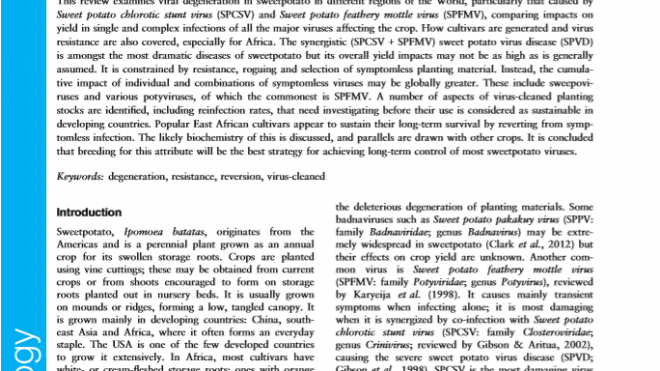This review examines viral degeneration in sweet potato in different regions of the world, particularly that caused by Sweet potato chlorotic stunt virus (SPCSV) and Sweet potato feathery mottle virus (SPFMV), comparing impacts on yield in single and complex infections of all the major viruses affecting the crop. How cultivars are generated and develop virus resistance is also covered, especially for Africa. The synergistic (SPCSV + SPFMV) sweet potato virus disease (SPVD) is amongst the most dramatic diseases of sweet potato but its overall yield impacts may not be as high as is generally assumed. It is constrained by resistance, roguing and selection of symptomless planting material. Instead, the cumulative impact of individual and combinations of symptomless viruses may be globally greater. These include sweepoviruses and various potyviruses, of which the commonest is SPFMV. A number of aspects of virus‐cleaned planting stocks are identified, including reinfection rates, that need investigating before their use is considered as sustainable in developing countries. Popular East African cultivars appear to sustain their long‐term survival by reverting from symptomless infection. The likely biochemistry of this is discussed, and parallels are drawn with other crops. It is concluded that breeding for this attribute will be the best strategy for achieving long‐term control of most sweet potato viruses.
Region: East Africa
Date published:
2014
Published by:
Plant Pathology
Type of resource:
Journal article
Resource topic:
Sweet Potato
Project/Programme: Not specific
Pest/Disease: Sweet potato viruses
Pages:
15
File type:
External link (228KB)




